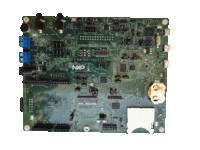EVK-MIMXRT595

-
Core
Cortex-M33
-
Device
MIMXRT595SFFOC -
CMSIS Pack
EVK-MIMXRT595_BSP
-
spi_polling_b2b_transfer_slave
µVision AC6The spi_polling_board2board_slave example shows how to use spi driver as slave to do board to board transfer withpolling:Notice: The SPI slave of this example uses interrupt mode, as there is no polling mode for SPI...See more details in readme document.
Download Pack -
spi_polling_b2b_transfer_slave
Keil Studio AC6, GCC, IARThe spi_polling_board2board_slave example shows how to use spi driver as slave to do board to board transfer withpolling:Notice: The SPI slave of this example uses interrupt mode, as there is no polling mode for SPI...See more details in readme document.
Download Pack -
spp
µVision AC6The Bluetooth BR SPP example.
Download Pack -
spp
Keil Studio AC6, GCC, IARThe Bluetooth BR SPP example.
Download Pack -
tflm_cifar10_cm33
µVision AC6CIFAR-10 example for TensorFlow Lite Micro
Download Pack -
tflm_cifar10_cm33
Keil Studio AC6, GCCCIFAR-10 example for TensorFlow Lite Micro
Download Pack -
tflm_label_image_cm33
µVision AC6Label image example for TensorFlow Lite Micro
Download Pack -
tflm_label_image_cm33
Keil Studio AC6, GCCLabel image example for TensorFlow Lite Micro
Download Pack -
tflm_modelrunner_cm33
µVision AC6ModelRunner for TFlite
Download Pack -
tflm_modelrunner_cm33
Keil Studio AC6, GCCModelRunner for TFlite
Download Pack
